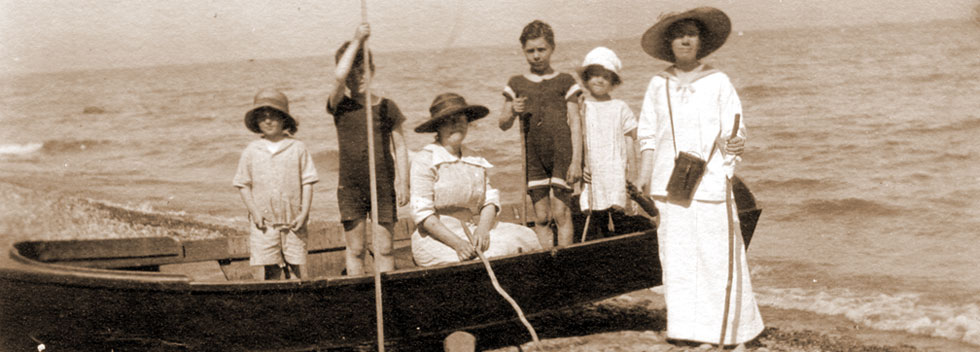Today the Schleswig-Holstein area of Germany is the northernmost of the sixteen states of Germany, comprising most of the historical duchy of Holstein and the southern part of the former Duchy of Schleswig. Its capital city is Kiel; other notable cities are Lübeck, Flensburg and Neumünster.
The former English name was Sleswick-Holsatia, the Danish name is Slesvig-Holsten, the Low German name is Sleswig-Holsteen, and the North Frisian name is Slaswik-Holstiinj. Historically, the name can also refer to a larger region, containing both present-day Schleswig-Holstein and the former South Jutland County (Northern Schleswig) in Denmark.
Some Notes
- Patronymics, the custom of taking a surname based on the first name of the father, lasted much longer here than in most parts of Germany
- Consists of the lower portion of the Jutland peninsula south of Denmark
- Mixture of Danish and German languages
- King of Denmark also held the title of “Duke of Schleswig”
- Schleswig is Slesvik in Danish
- Holstein was Lutheran
- Called duchies
Schleswig-Holstein Timeline
- 1460
- King Christian I was “Count of Holstein” as well as “Duke of Schleswig”
- 1536
- In Denmark, the Evangelical Lutheran Church became the national church after the Reformation
- 1616-1659
- During the reign of Duke Frederik III, Holstein became independent from Denmark
- 1721
- Denmark claimed Schleswig
- 1773
- Catherine the Great of Russia relinquished her claim to both Holstein and Schleswig, indicating that the previous czar had claimed sovereignty over them
- 1806
- Dissolution of the Holy Roman Empire
- ca. 1800
- Napoleonic invasions
Schleswig and Holstein suffered economic depression. Each had its own monetary system and tried to assert its independence from Denmark - 1815
- Frederick VI of Denmark reclaimed Schleswig-Holstein
- 1848
- Schleswig-Holstein bound officially by the constitution signed by King Frederick VII
- 1850
- Frederick VII appointed his uncle Friedrich “Prince of Nor” as governor of Schleswig-Holstein. He was more German than Danish and put a restriction on the speaking of Danish in Schleswig-Holstein.
- 1867
- Expansion of Prussian State. Bismarck’s forces invaded Schleswig-Holstein and incorporated them into the Second Reich.
- 1920
- After armistice was signed, the citizens of Schleswig-Holstein were allowed to choose to which nation they preferred to belong and the border between north and south Schleswig was drawn based on a vote. Northern Schleswig chose Danish citizenry and southern Schleswig chose to be part of the new German state of Schleswig-Holstein.
Sources
The Atlantic Bridge to Germany, Volume V, Schleswig-Holstein, Hamburg and Bremen by Charles M. Hall. Everton Publishers, Inc., P.O. Box 368, Logan UT 84321, 1978.

TrackBack URL
https://www.karenfurst.com/blog/genealogy/historical-background/germany/schleswig-holstein/trackback/